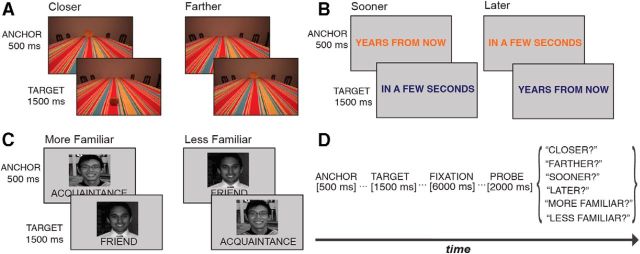Figure 1.
Experimental paradigm. A–C, Examples of each trial type. Within each trial, stimulus change over time was analogous to “movement” either toward or away from the observer in a spatial, temporal, or social frame of reference. A, Spatial distance trials consisted of household objects photographed at different egocentric distances. B, Temporal distance trials consisted of phrases referring to the immediate or more remote future. C, Social distance stimuli consisted of the names and photographs of four friends and four acquaintances of each participant. Experimental stimuli contained individuals' actual first and last names rather than the words “friend” and “acquaintance.” D, Generic trial schematic. Within each domain, two possible probes varied randomly across trials (e.g., either “Sooner?” or “Later?” for temporal distance trials). Participants responded “Yes” or “No” with a button press. Each trial was followed by an additional 6 s of fixation before the beginning of the next trial.

